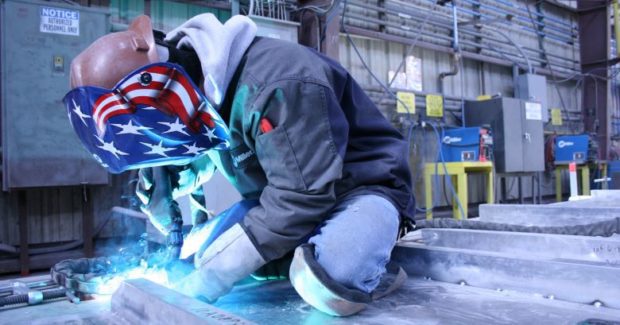Overcoming Common Challenges When Welding Aluminum
Achieve better results by fully comprehending the different properties of the material and following best practices when welding aluminum.
Posted: July 19, 2021
WELDING TIPS
By Kodi Welch
Aluminum is often thought of as being difficult to weld. In reality, welding aluminum is different than other materials, but it doesn’t have to be more difficult.
Proper cleaning and storage, controlling heat input and reducing spatter are important factors to keep in mind when welding aluminum.
Optimizing results with aluminum welding requires understanding the material and its characteristics. Knowing some best practices for welding aluminum can save you time and money — and help ensure you’re producing quality welds.
SIX COMMON CHALLENGES OF ALUMINUM
Here are six common challenges welders may encounter in aluminum welding and some troubleshooting tips for addressing them.
- Poor wire feedability: Wire-feeding issues are common in MIG welding because aluminum wire has low columnar strength. Feeding aluminum wire is sometimes compared to pushing a wet noodle through a straw. Bird-nesting, or the tangling of the wire between the drive roll and the liner, is a time-consuming and costly problem. Burnback can also result when the wire stops feeding. Preventing these issues starts with proper equipment setup and gun liner installation. It can also help to use the largest wire diameter that is practical for the application. The pulsed welding process often allows for using a wire diameter that is one size larger at similar amperage settings as a smaller wire diameter, which helps reduce feeding issues without adding excessive heat input.
- Burn-through: When you’re welding aluminum, too much heat can cause problems. Setting weld parameters that are too hot or using too slow of a travel speed are frequent causes of excess heat input. Too much heat can lead to burn-through, especially on thinner-gauge aluminum. This may require thin-gauge aluminum be ran with faster travel speeds than steel. When TIG welding, reduce the welding amperage or add more filler material rod (by increasing the rod diameter or pushing more length in at each addition). This helps cool the weld puddle down.
- Lack of fusion or lack of penetration: Lack of penetration is often seen at the start of the weld, while lack of fusion typically happens at the weld toes. Issues with weld fusion and penetration can stem from the process, filler metals or parameters being used. Welding aluminum with the same parameters you would use to weld mild steel can result in fusion or penetration issues. Using undersized filler metals can also cause a lack of penetration in the root, as can too little heat. Increasing the voltage or wire feed speed can help resolve fusion issues. Because aluminum conducts heat much faster than steel, it is prone to lack of fusion at the start of a weld until enough energy is put into the weld. Some welding equipment addresses this by automatically ramping up the current at the start of a weld and then decreasing it to avoid too much heat buildup. A failure to clean the oxides from the base material surface can also cause lack of fusion and lack of penetration, since the oxide may melt at a higher temperature than the base material.
- Inconsistent bead profile: While you can’t get a consistent bead profile if you have wire feeding issues (addressed above), proper technique also plays a role in good bead profile. It’s recommended to use a stringer bead. Whipping or back stitching slows travel speed and increases heat input, which may result in lack of penetration or fusion. Push techniques should be used while maintaining a consistent weld puddle size and shape. The welding arc should be kept on the leading edge of the puddle, since allowing the arc to fall back into the puddle can result in problems with lack of fusion.
- Porosity: A common headache for many operators when welding aluminum, porosity is most often caused by a lack of proper cleaning of the base material or using weld parameters that are too cold. Using a pulsed MIG process rather than a short-circuit process can reduce porosity on aluminum. Porosity can also be caused by a lack of shielding gas, so be sure to check for improper settings on the equipment; a hole in the gun liner or torch hose; or wind blowing the shielding gas away. One indicator of shielding gas problems is a very black and sooty looking weld.
- Distortion and warpage: If you’re experiencing distortion or warpage when welding aluminum, it often comes down to heat input and technique. Lower the heat input by welding at the fastest travel speeds possible. Minimize weaving and whipping techniques and use weld settings rather than technique to control puddle size and fluidity.
IMPROVING RESULTS IN ALUMINUM WELDING
Tackling the common challenges of aluminum often comes down to understanding the different properties of the material. Following the best practices for choosing equipment and consumables and for welding technique can also help you get better results in aluminum welding.






